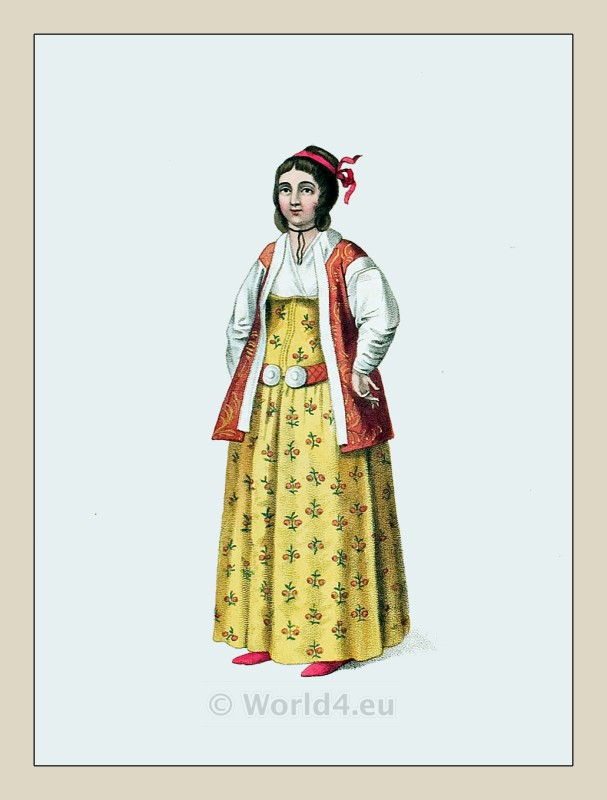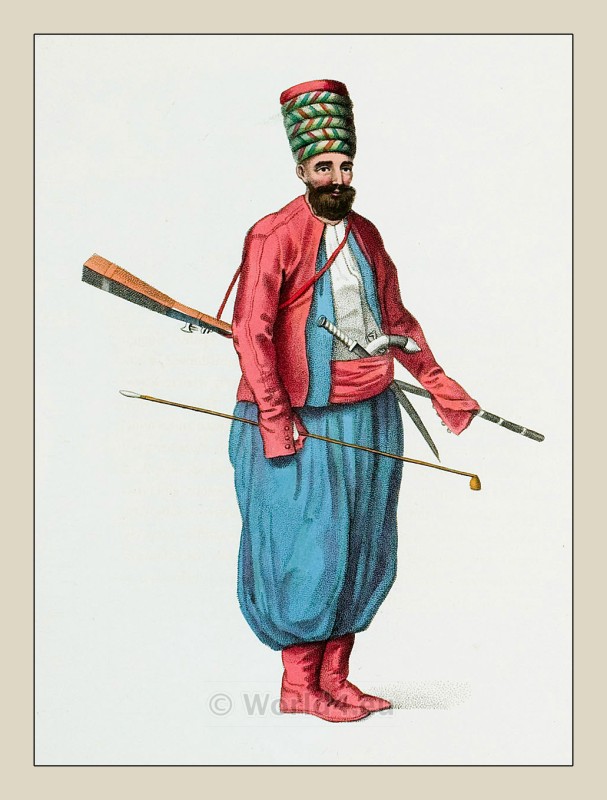The Tatars have different degrees of rank. Historical Ottoman Empire officials and ethnic groups.
Category: 1804
Costumes and Fashion in 1804
A Mevlevi Tariqa Dervish. Historical Ottoman Empire officials.
The founder Dschalal ad-Din Muhammad Rumi. When the first Dervish comes opposite the Scheik he makes a salutation, and, passing on, begins the dance.
A Turkish woman wears a green feredje. Dress worn at Constantinople.
The feredjè (Mantle, Cape or coat), is universally in that city made of green cloth or other stuff, with its long square cape quilted and covered with green silk.
A woman with maharmah, feredje and yellow boots.
A lady in a provincial dress with maharmah and feredje. Women commonly wore this style of outfit in Constantinople and the outer regions of the city.
Portrait of a female living at Pera, as she appears in the interior, or harem.
Portrait of a female living at Pera, as she appears in the interior, or harem.
The Kislar Aga, or first Eunuch of the Ottoman Harem.
Kızlar Ağası was the title of the chief black palace eunuch who guarded the imperial harem.
Capidji Bachi their dress of ceremony.
Capidji Bachi. Officers of the Grand Signior. Historical Ottoman Empire officials and ethnic groups. THESE officers, who are in their dress of ceremony, which consists of rich silks, trimmed and… Read More
An Inferior Officer of the Janissaries. Ottoman Empire.
An Inferior Officer of the Janissaries. Lower-ranking official of the Janissary corps.
A Sultana, or Odalisk. Odalisque of the Sultan’s Harem.
Odalisque of the Sultan’s Harem.
A Spahi of the Asiatic provinces. Member of the Ottoman irregular cavalry.
The establishment of the Spahis is the most ancient in Turkey. This drawing was made from a Spahi, belonging to one of the Asiatic provinces.









